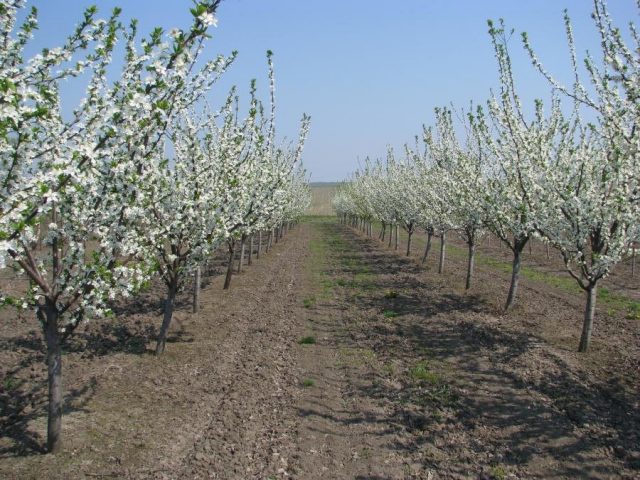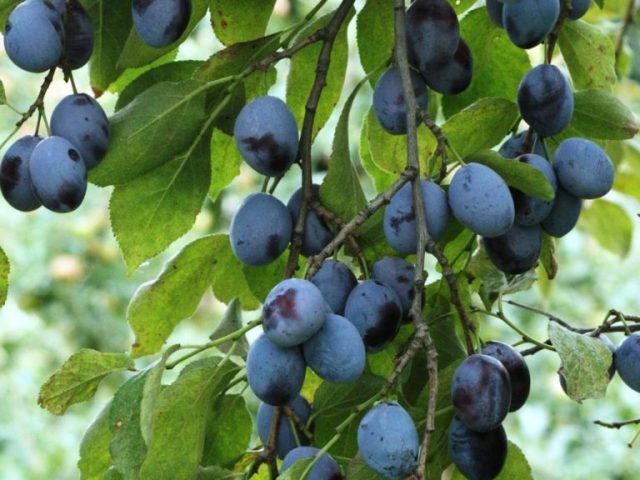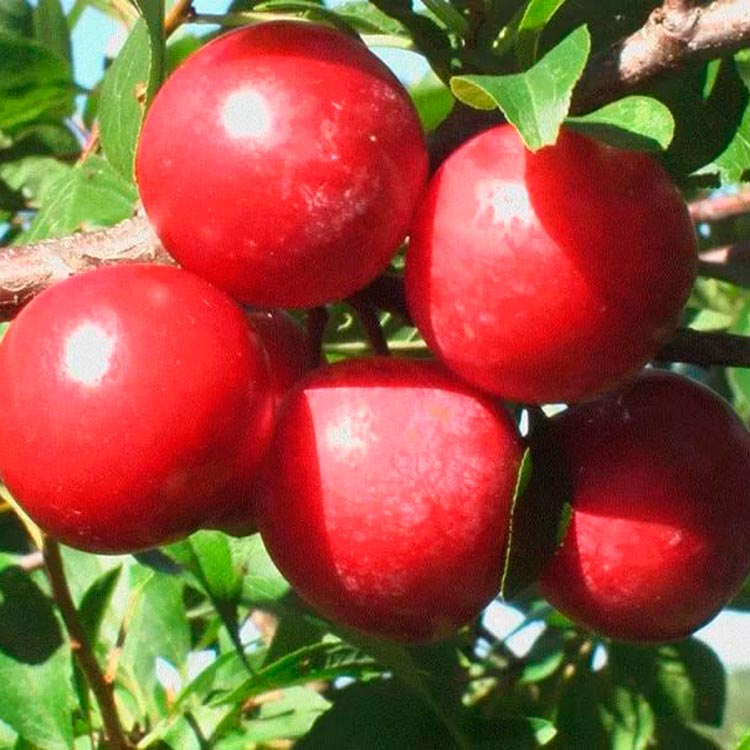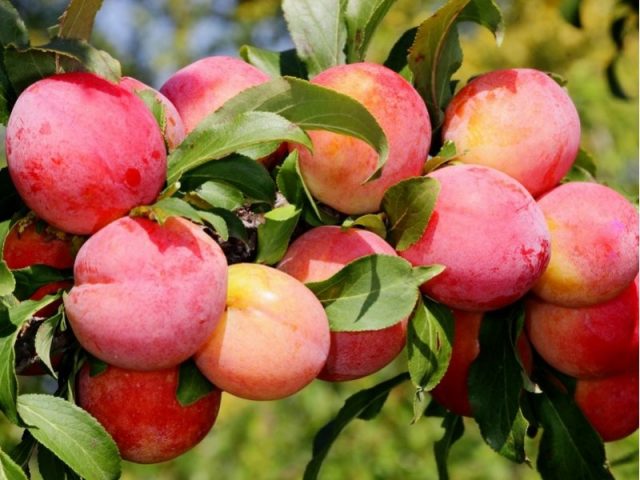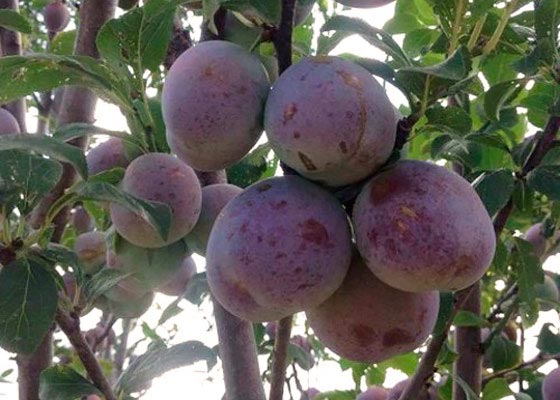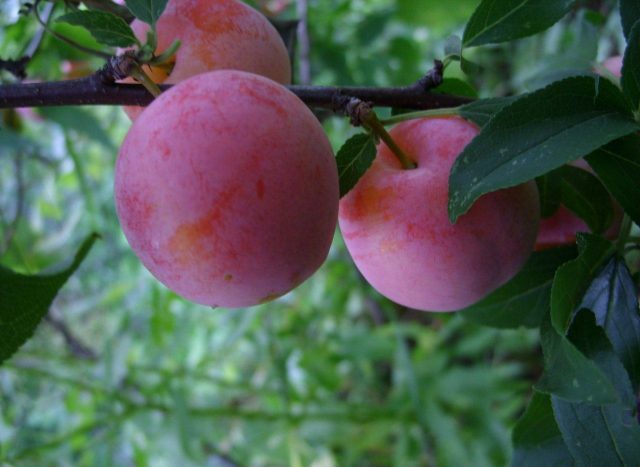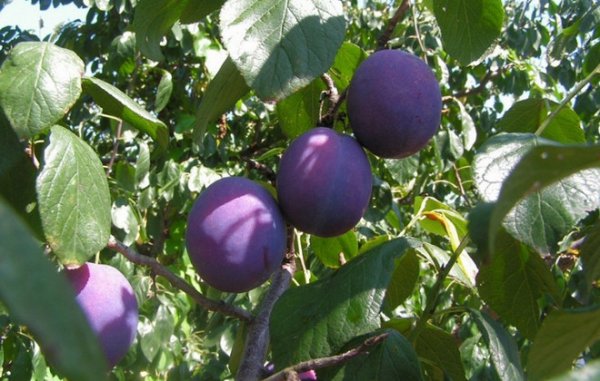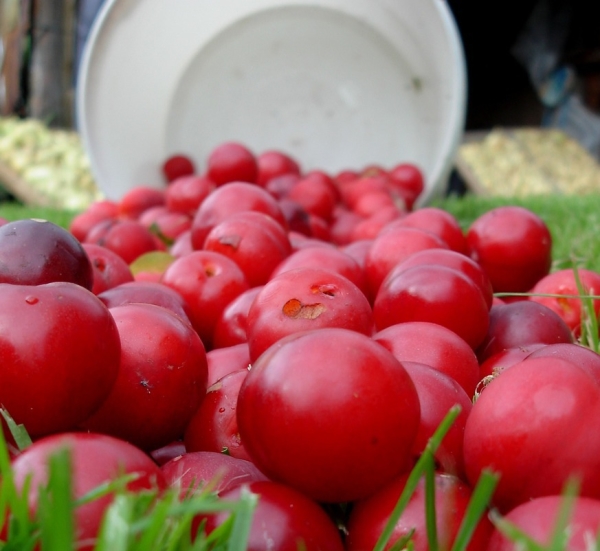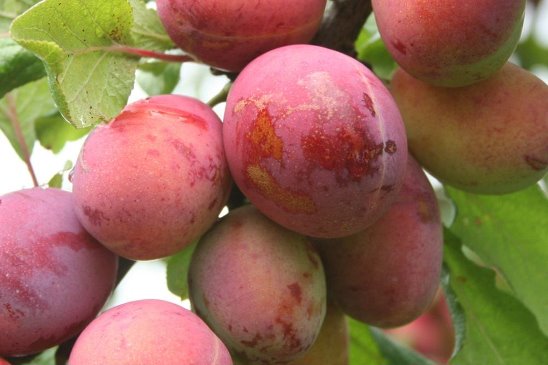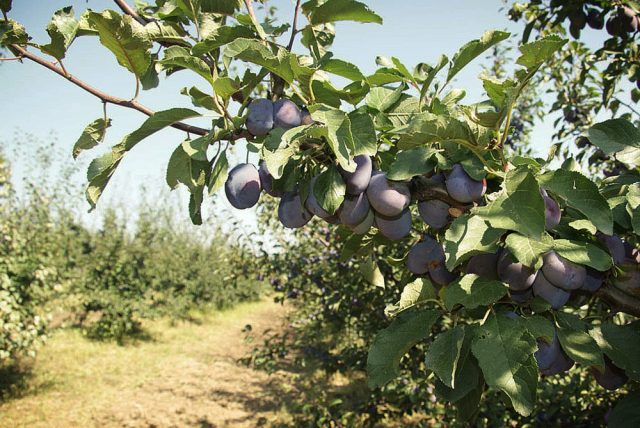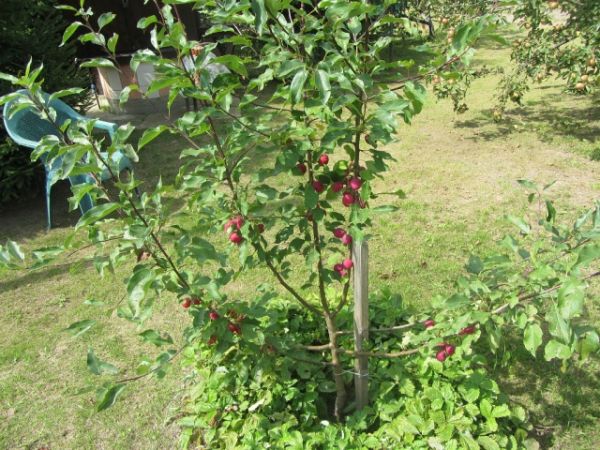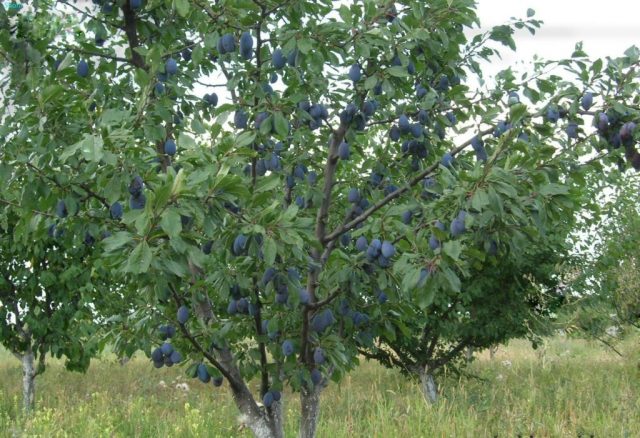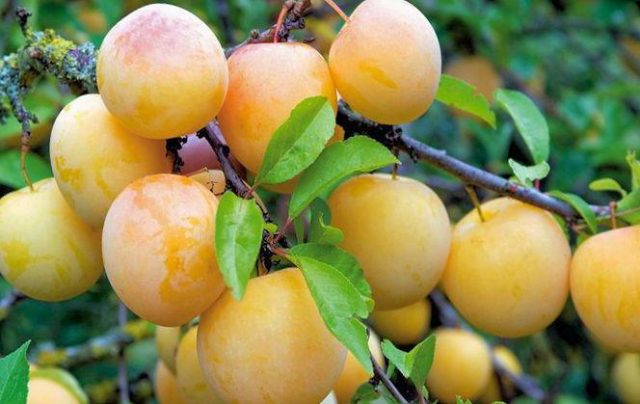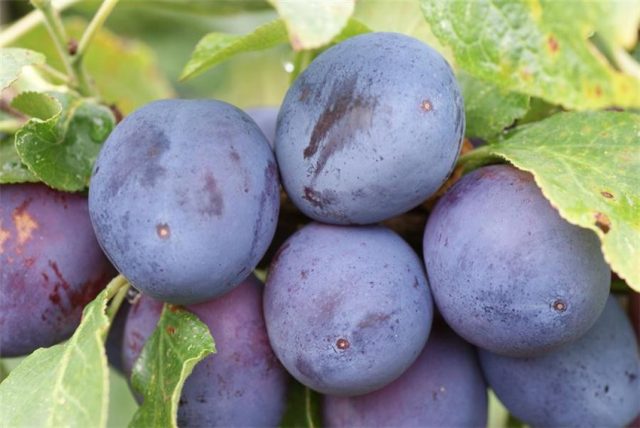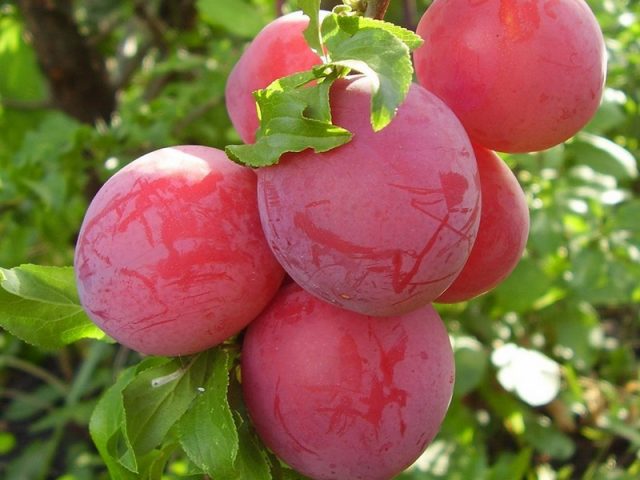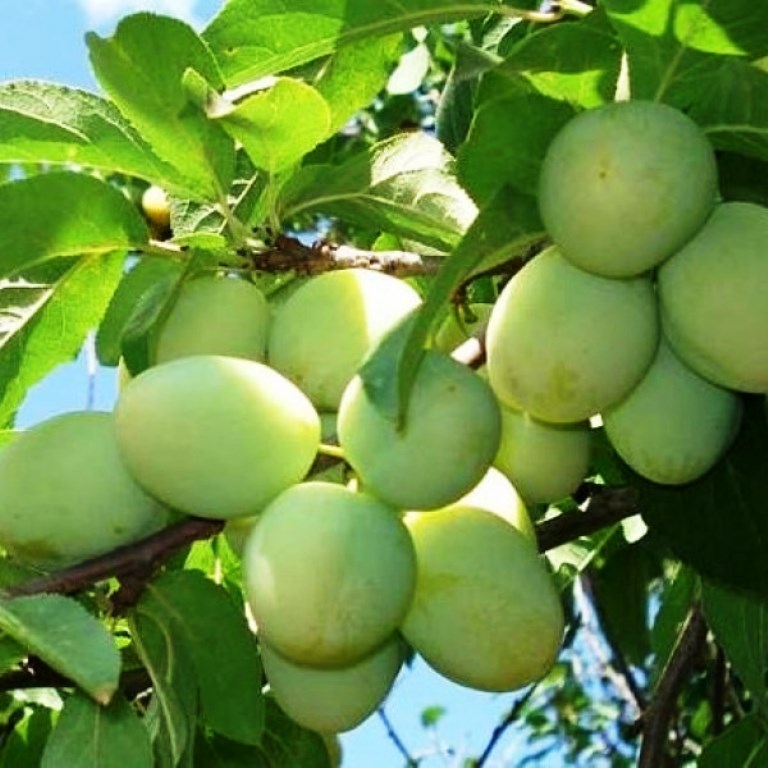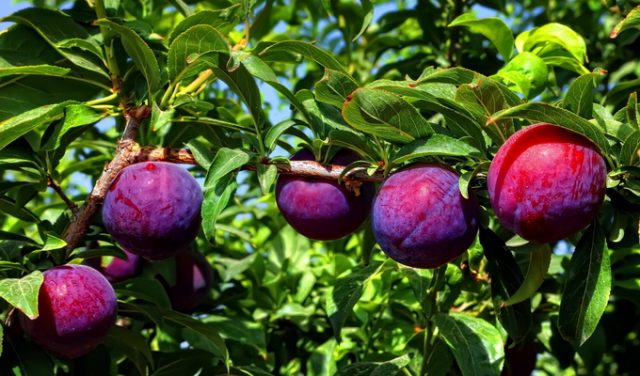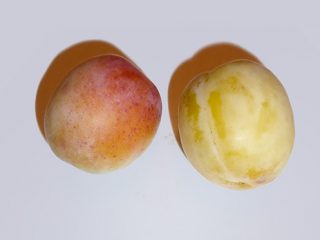Content
- 1 The nuances of growing plums in the Moscow region in the open field
- 2 The best plum varieties for the Moscow region
- 2.1 Self-pollinated plum varieties for the Moscow region
- 2.2 Low-growing plum varieties for the Moscow region
- 2.3 Medium-sized plum varieties for the Moscow region
- 2.4 Winter-hardy plum varieties for the Moscow region
- 2.5 Early varieties of plum for the Moscow region
- 2.6 Late varieties of plum for the Moscow region
- 2.7 Varieties of Chinese plum for the Moscow region
- 2.8 Russian plum varieties for the Moscow region
- 2.9 Homemade plum varieties for the Moscow region
- 2.10 The best varieties of yellow plum for the Moscow region
- 2.11 The best varieties of red plum for the Moscow region
- 2.12 Sweet plum varieties for the Moscow region
- 2.13 Large varieties of plums for the Moscow region
- 2.14 Popular varieties of plums in the Moscow region
- 3 Plum planting in the suburbs
- 4 Plum care in the Moscow region in spring, summer and autumn
- 5 Plum varieties for central Russia
- 5.1 Yellow plum varieties for central Russia
- 5.2 The best varieties of large-fruited plums for the middle lane
- 5.3 New varieties of plum for the middle lane
- 5.4 Self-pollinated plum varieties for central Russia
- 5.5 Sweet plum varieties for the middle band
- 5.6 Low-growing plum varieties for the middle lane
- 5.7 Early varieties of plum for the middle band
- 5.8 Late plum varieties for the middle lane
- 5.9 High-yielding plum varieties for the middle lane
- 6 Planting plum seedlings in spring in the middle lane
- 7 Growing and caring for plums in the middle lane
- 8 Conclusion
- 9 Testimonials
Plum for the Moscow region is a culture that is of interest to many gardeners. What kind of plant to choose for cultivation in the middle lane, how not to be mistaken with the characteristics?
The nuances of growing plums in the Moscow region in the open field
The fruit tree is classified as sufficiently susceptible to winter cold and spring frost. Therefore, not every plum variety can survive in the open ground in the Moscow region.
Climatic features of the region
Several climatic factors can be identified that affect the development of fruit trees in the Moscow region.
- Annual temperature regime. Winters in the Moscow Region are moderately cold, with occasional significant frosts, summers are warm and with moderate precipitation.
- The amount of natural light. The sun shines in the Moscow region for about 1,500 days - that is, half of the days a year.
- Height of snow cover and depth of soil freezing... Usually, snow in the Moscow region in winter forms a cover 20 - 25 cm thick. The earth does not freeze deeper than 1.5 m down.
How many years does a plum bear fruit in the Moscow region
A plum tree in the Moscow region cannot produce crops for too long. Usually 10-15 years after the first harvest, fruiting stops - in this case, it is worth planting a new tree. At the same time, the old plum does not have to be cut down and uprooted - it can perform decorative functions.
When the plum blooms in the suburbs
Plum blossom dates always fall at the end of April - May. Some varieties of fruit trees bloom a little earlier, others a little later.
What varieties of plums are better to plant in the suburbs
The climate of the Moscow region is considered moderate, but the so-called return frosts pose a great danger to trees.
- Plum for the Moscow region must be frost-resistant, first of all.
- It is better to choose undersized or medium-sized trees - they definitely have enough light for healthy development.
- If the garden is small, then it is recommended to give preference to self-fertile varieties.
- It is necessary to determine whether an increased yield is required from the plum, or a sufficiently modest fruiting.
The best plum varieties for the Moscow region
Plum varieties suitable for the Moscow region can be divided into many categories - according to winter hardiness, fruiting times and other parameters.
Self-pollinated plum varieties for the Moscow region
The greatest interest is traditionally aroused by self-fertile varieties that can be planted without the obligatory neighborhood of pollinators. These include:
- Prunes - a variety obtained by crossing blackthorn with cherry plum. Drupes are dark blue, large, juicy with a bitterish dense skin. The tree is harvested late - in early September.
- Black Tulskaya Is a mid-late domestic variety that produces bountiful harvests even without pollinators. Gives oval or ovoid blue drupes with a slight reddish tint and a bluish bloom on the skin.
- Egg blue - bears fruit without the participation of pollinators, is tall up to 6 m in height. Brings ovoid dark blue drupes, sweet with a slight sourness. Plums can be harvested as early as mid-August.
Low-growing plum varieties for the Moscow region
With a moderate amount of sunlight, it is better to give preference to short trees. The most popular undersized varieties include:
- Red Ball - dwarf plum up to a maximum of 2.5 m, blooms early, bears fruit on its own. The harvest consists of large, round fruits with a red skin, slightly bluish.
- Oryol dream - another low plum, reaching 2.5 m. It blooms and bears fruit early, gives juicy red drupes. The plum does not need a pollinator.
Medium-sized plum varieties for the Moscow region
Trees of moderately tall growth in the Moscow region can also be planted - there will be quite enough light for them. The following varieties are in demand:
- Peach - cold-resistant variety with yellow-green fruits covered with a delicate reddish blush. The plum reaches a height of 3 - 4 m, the crown has a round or reverse pyramidal. Requires pollinators, the varieties Zeleny Renklode and Anna Shpet are well suited for their role.
- Nika - fruit tree up to 4 m in height with a spreading crown, bears dark purple oval fruits with a blue bloom. It yields in August, and Donetsk Hungarian and Soviet Renklode are well suited for pollination of plums.
Winter-hardy plum varieties for the Moscow region
Temperature drops often occur in the Moscow region. Therefore, it is recommended to plant cold-resistant plums here. These include:
- Ksenia - a variety with increased resistance to cold weather, tolerates temperatures from -30 to -50 degrees. Produces abundant yellow fruits with a crimson blush, pollinated by the Yubileinaya and Peresvet varieties.
- Ussuriyskaya - a variety with a frost resistance level of up to -40 degrees. Fruiting in yellow, rounded plums, pollinators are required for a good harvest, for which sand cherries or plums with a flowering period in early May are suitable.
Early varieties of plum for the Moscow region
Fruiting is considered early, which occurs around mid-July - and many gardeners dream of just such varieties.
- Kabardinka - variety with flowering in late April and harvest in mid-July. Fruits are dark purple, with a grayish bloom, pollinated independently.
- Starting - ripens very early in July, gives dark red sweet fruits with a blue bloom on the skin. It can pollinate on its own, but responds well to the proximity to the varieties Eurasia-21 and Volzhskaya krasavitsa.
Late varieties of plum for the Moscow region
Late fruiting of plums begins at the end of August and continues in September. Of these varieties, the most famous are:
- Hungarian Moscow - ripens with blue-purple fruits in the second decade of September. Ideal for the temperate climate near Moscow, well pollinated by the red Skorospelka.
- Stanley - a plum with purple fruits, ripening in early September. The variety is high-yielding, frost-hardy, and is successfully pollinated by the Empress and President varieties.
Varieties of Chinese plum for the Moscow region
Chinese plum and its hybrids are very easy to care for trees. The following varieties are well suited for the Moscow region:
- Chemalskaya - plum, depending on the sub-variety, yielding blue, red or yellow fruits in mid-August. Pollinated by Peresvet, Altai and Krasnoselskaya, tolerates cold well.
- Alyonushka - a frost-resistant hybrid with dark red fruits ripening in early August. Successfully pollinated with Skoroplodnaya plum.
- Beautiful Vecha - early ripening variety with rounded red fruits. Highly resistant to frost, partially self-fertile, but shows the best yield in the vicinity of other early flowering plums.
Russian plum varieties for the Moscow region
Hybrids of the Russian plum or cherry plum are very popular in the Moscow region:
- Mara - Russian variety with late September ripening and roundish yellow fruits. Easy to care for, but for a bountiful harvest, pollinators are needed - for example, Vitba.
- Kuban comet - originally a southern variety is successfully cultivated in the Central region. In July, it bears red sweet fruits, the yield will be higher if you plant a fast-growing plum next to it.
Homemade plum varieties for the Moscow region
Among gardeners, homemade varieties are especially respected - plums with an especially easy care regimen.
- Bogatyrskaya - bears fruit with massive purple fruits, ripens closer to September. It is frost-resistant, almost does not get sick and, moreover, does not need pollination.
- Victoria Is a self-fertile sweet variety with reddish-purple fruits. Fruiting profusely, tolerant of growing conditions, often used as a pollinator for other plums.
- Early ripening red - a variety with raspberry-purple fruits, ripening in August-September. It is well pollinated by the collective farm Renklod and the Moscow Hungarian, perfectly tolerates frosts and gives a harvest every year.
The best varieties of yellow plum for the Moscow region
The yellow plum is known for its particularly sweet and beautiful fruit. Well suited for the Moscow region:
- Altai anniversary - grows in almost any conditions. It perfectly tolerates severe frosts and aridity, gives early yellow fruits with a red blush, is well pollinated by the Chemal plum.
- Apricot - a hybrid of apricot and plum with high frost resistance, ripens in early August, is capable of self-pollination.
The best varieties of red plum for the Moscow region
It enjoys the love of gardeners and the plum, which bears fruit with red berries. The following varieties are suitable for the Moscow region:
- Ural red - ripening in mid-August, produces small oval red fruits, tolerates even the most severe frosts. It is partially pollinated independently, it bears fruit better if there are other plums in the neighborhood with similar flowering periods.
- Red meat - an unusual variety with extremely fleshy fruits of bright red color. Pollinated by hybrids of cherry plum and Ussuriyskaya plum. The fruits reach maturity in mid-August, the frost resistance of the tree is moderate.
- Harmony - a dark red variety with a blue bloom, ripening from the end of July. Plum is self-fertile, pollinators are not needed for it.
Sweet plum varieties for the Moscow region
Most gardeners prefer to grow the sweet, dessert plum varieties. These include:
- The president - a variety that bears large purple fruits with a tasting score of 4.6 points.
- Opal - Swedish plums with a purple skin covered with a bluish bloom. The tasting score of the fruit is 4.5 points out of a possible 5.
Large varieties of plums for the Moscow region
Any summer resident is pleased to collect the most weighty fruits from plum trees. The following varieties are considered large-fruited:
- Gigantic - dark purple plum fruits are egg-shaped, each can reach up to 60 g in weight.
- Angelina - round red-purple fruits weigh in general from 60 to 90 g, and especially large specimens reach 120 g.
Popular varieties of plums in the Moscow region
There are several more varieties that are especially popular in the Moscow region.
- Memory of Timiryazev - a variety with yellow-reddish fruits, gives a late harvest, self-fertile, survives frosts up to -30 degrees.
- Anna Shpet - a popular variety of plum, unpretentious to growing conditions, yields purple fruits, pollinated best of all with green Ranclode.
Plum planting in the suburbs
The plum planting algorithm in the Moscow region depends on the specific variety. But there are rules that apply to any plant species.
When is it better to plant a plum in the suburbs
Spring is the best time to plant a plum tree. Even if the seedling is frost-resistant, its roots are still too sensitive to the cold and may suffer in the first winter when planting in autumn. It is optimal to plant in early April, when the frosts have already been left behind, and the active growing season has not yet begun.
Choosing a landing site
It is recommended to plant a tree on the south side. It is better to choose sandy loam soil, with a sufficiently deep groundwater bed.
Choosing a plum sapling for the Moscow region
The main rule when choosing a seedling is that it has strong and healthy roots. Care must be taken to ensure that they are not dry, broken or too thin.
Planting plums in the spring in the suburbs: preparing a pit
The plum tree is very sensitive to soil quality. Therefore, even a few months before planting a seedling, in the fall before the onset of cold weather, it is customary to prepare a planting pit.
The soil in which the plum will be planted is dug up, the soil is taken out about 50 - 70 cm deep. Fertilizers are laid inside - compost, rotted manure, superphosphate and ash.
How to plant a plum in the spring in the suburbs
Spring planting of plums in the suburbs is like this.
- A pre-prepared hole should be about twice as large as the roots of a young plant - both in width and depth.
- The seedling must be carefully lowered into a hole half filled with soil and fertilizers, and covered with soil, properly tamped.
- Immediately after planting, 3 buckets of water are introduced under the trunk, and then the tree is tied to a support for even growth.
Plum care in the Moscow region in spring, summer and autumn
Competent care of a plum tree in the Moscow region includes the following points:
- Watering - carried out about once a month with normal rainfall, becomes more frequent during the ripening period. The earth must not be waterlogged.
- Top dressing - in the spring, it is recommended to apply nitrogen fertilizers to the soil. In the summer, you can add a little potassium under the trunk, and in the fall, scatter organic matter under the tree.
- Shortly before the arrival of winter, you need to carry out the last watering of the year, cover the ground with mulch to retain moisture and heat, and then cover the trunk with spruce branches or roofing felt - from frost and rodents. After snowfalls, the snow around the trunk can be compacted.
Pruning plums in the suburbs
For full development, the plum must be pruned regularly.
- After leaf fall for the Moscow region, it is recommended to carry out sanitary pruning - as well as for the middle lane.
- Plum shoots older than 2 years are pruned 2/3 of their length annually.
- You can cut plums in the Moscow region in the spring to form a crown. Remove unnecessary branches, leaving only the strongest and most promising shoots.
Plum varieties for central Russia
By and large, the climate of the middle zone differs little from that of the Moscow region. However, winters can be slightly colder here and summers can be drier. Therefore, certain varieties of plum trees are recommended for planting in the middle lane.
Yellow plum varieties for central Russia
The following yellow plum varieties take root safely in the middle lane:
- White Honey - ripens early, in early August, yields large yellow-gold berries with a sweet taste. Pollinated by Donetsk Early and Donetsk Hungarian.
- Altai anniversary - grows well throughout the middle lane and even in Siberia. Ripens early, yields yellow drupes with a reddish blush, well pollinated by Chemalskaya plum.
The best varieties of large-fruited plums for the middle lane
The heaviest drupes give the following hybrids:
- Giant - quite sensitive to cold weather, but with good care, a variety with burgundy drupes that takes root in the middle lane. The weight of each plum can be up to 70 - 110 g. Any plum varieties that bloom in May are suitable for pollination.
- General's - The plum ripens in mid-September and produces bright orange drupes. The average weight is 40 g, the plums are quite large and weighty. The Ural red can become a pollinator.
New varieties of plum for the middle lane
Fresh varieties of plum trees appear regularly, and it is always interesting to plant unfamiliar crops in the middle lane.
- Natasha - a plant with ripening dates in the second decade of August and yellow drupes. Pollinated by Edinburgh plum, has a good level of winter hardiness and is ideal for the middle lane.
- Shy - ripens late, yields brown-violet drupes with a sweet taste. Pollinated with plums for the middle strip with flowering in early May.
Self-pollinated plum varieties for central Russia
For small gardens in the middle lane, the following self-fertile varieties are well suited:
- Hungarian Pulkovskaya - blooms in mid-May and ripens in September, gives dark red drupes. It is zoned for the Leningrad region, therefore it is well suited for the climate of the middle zone.
- Volgograd - blooms in early May, ripens in mid-August. Drupes are dark raspberry, sweet and sour taste.
Sweet plum varieties for the middle band
The following plums for growing in the middle lane have the most pleasant dessert taste:
- Blue bird - tasting score of oval blue drupes is 4.6 points. Can be pollinated by Caucasian Hungarian.
- Volga beauty - purple-blue drupes have a tasting score of 4.5 points. The best pollinator for plums will be red Skorospelka.
Low-growing plum varieties for the middle lane
In the middle lane, it is preferable to plant low-growing trees that are not very demanding on the amount of light.
- Blue gift - classic dark plum up to 3 m tall; in the third decade of August it brings small blue drupes. Pollinated independently.
- Candy - a tree with red dark fruits grows only up to 2.5 m. Fruiting at the end of July, reacts well to the neighborhood of the collective farm Renklode, which serves as a pollinator.
Early varieties of plum for the middle band
To get juicy fruits as early as possible, you can plant the following early varieties of plums for central Russia:
- Morning - produces green-yellow drupes of moderate size in the first decade of August. It is not necessary to select pollinators for the plant - the variety bears fruit on its own.
- Delicate - ripens in early August, gives light yellow drupes with a reddish bloom. Partially self-fertile plant, but yields best in the middle lane if it grows near the Edinburgh plum.
- Hope - self-fertile plum for the middle lane with harvests in early August. Plum drupes are ordinary, dark blue, sweet with a slight sourness.
Late plum varieties for the middle lane
To get delicious plums in early autumn, you can plant the following varieties in the middle lane:
- Bogatyrskaya - ripens in the second decade - end of August with almost black drupes with a bluish coating. It is self-pollinated, which simplifies cultivation.
- Empress - reaches ripeness in mid-September, has a dark blue fruit. The best yields are in the vicinity of Stanley and Valor varieties.
High-yielding plum varieties for the middle lane
If you want to get the largest possible amount of fruits from a plum, you should give preference to the following varieties for the middle lane:
- Amusing - a variety with round yellow-green drupes, pollinated by Moscow Hungarian and Timiryazev's Memory. The yield level is high - up to 3 buckets from one tree.
- Valor - dark burgundy plum, bringing up to 30 kg of tasty drupes from one plant. Produces as abundantly as possible next to the Empress and Blue Free varieties.
Planting plum seedlings in spring in the middle lane
Planting and caring for a plum in the middle lane occurs according to standard rules.
- The best place for seedlings in the middle lane is loamy or sandy loam soils in well-lit areas.
- Immediately before planting or a few months before planting, the soil is properly fertilized with organic matter and nutrients.
- After planting, the plum in the middle lane is watered and tied up.
Growing and caring for plums in the middle lane
In order for the plum in the middle lane to grow healthy and bear abundant fruits, it is important first of all to protect it from frost and drying out.
- Several times a year, plums must be watered - in the spring during the flowering period, in the summer during ripening, in the fall before the onset of cold weather. During periods of drought in the middle lane, watering is increased.
- For the winter, even frost-resistant trees in the middle lane need to be surrounded by spruce branches around the trunk, mulch the soil around the trunk in advance, and if there is snow cover, trample it down well, forming a protective layer against rodents and frost.
Conclusion
Plum for the Moscow region should be sufficiently resistant to cold, since frosty winters and severe spring frosts occur in the region, as in the entire middle zone. There are dozens of varieties with suitable characteristics - it is not difficult to choose the right tree from them.
Testimonials

